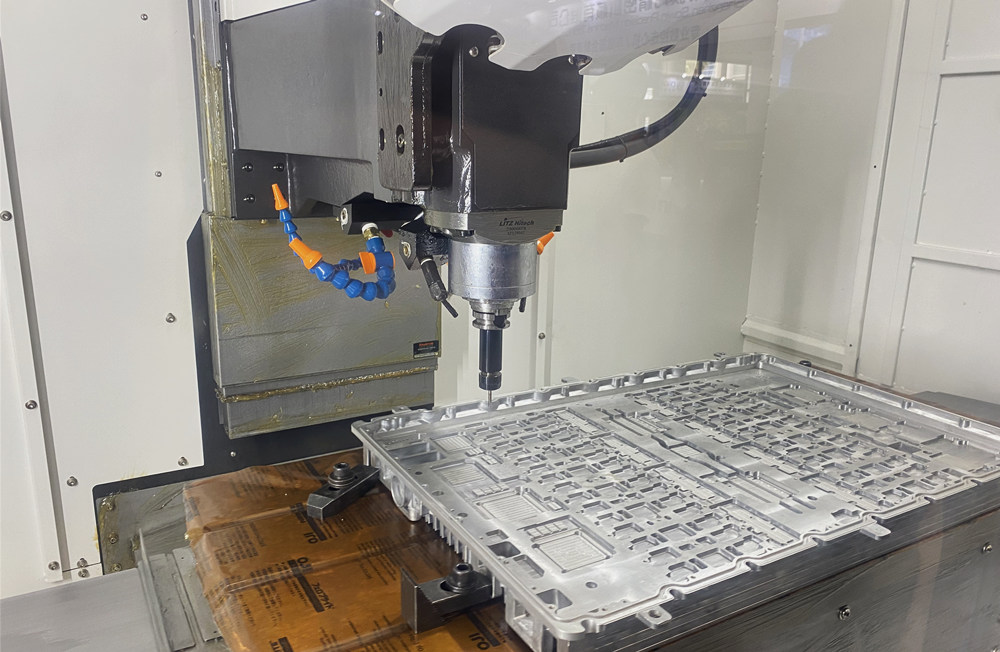For precision CNC machining parts including CNC turning parts and CNC milling parts, we have full experience to provide you with professional solutions. A wide variety of materials can be machined, including stainless steel, aluminum, cooper, bronze,zinc, brass and much more.
Welcome to get your quotation!
Overview of CNC Machining Services
Computerized Numerical Control (CNC) is a computerized manufacturing process in which pre-programmed software and code controls the movement of production equipment. CNC machining is a subtractive manufacturing process that turns 3D drawings into tangible objects by selectively cutting materials under computerized controls. Both plastic parts and metal parts can be processed by CNC machining. CNC machining services provide applications for a variety of industries, including automotive, aerospace, construction and agriculture, and is capable of producing a range of products such as automotive parts, surgical equipment, aircraft engines, gears and hand and garden tools.
Many companies require CNC machining services to manufacture parts and rapid prototypes. Because CNC machining is a one-stop, end-to-end process with short lead times. Papler Industry is a professional CNC machining parts supplier. We can provide custom CNC machining services for your design with exact specification, budget prices and on-time delivery based on your requirements. Our CNC machining shop supports milling, turning, drilling, grinding and more processes, as well as excellent surface finishing. And not only we can custom CNC machining of stainless steel materials, we support other more materials you require, such as aluminum,copper,brass,steel,titanium,plastic...

Common Used Materials of CNC Machining
1.ALUMINUM: Aluminum is a highly ductile metal, making it easy to machine. The material has a good strength-to-weight ratio and is available in many types for a range of applications.
2.COPPER: Copper displays excellent thermal conductivity, electrical conductivity and plasticity. It is also highly ductile, corrosion resistant and can be easily welded.
3.BRASS: Brass has desirable properties for a number of applications. It is low friction, has excellent electrical conductivity and has a golden (brass) appearance.
4.STEEL: Steel is known for its high tensile strength and low costs. It is a ubiquitous material in the construction, infrastructure, automotive, maritime, tooling, manufacturing and defense industries.
5.STAINLESS STEEL: Stainless steel typically contains a minimum of 10% chromium by weight. It is a popular metal within a broad range of industries, including construction, automotive, aerospace and more.
6.TITANIUM: Titanium is resistance to corrosion, chemicals and extreme temperatures, and has excellent strength-to-weight ratio. It has broad adoption in the aerospace, medical and defense industries.
7.PLASTIC: Plastic is an indispensable part of our everyday world. It is known for its lightweight, high strength-to-weight ratio, electric insulation, low price, suitable for mass production, etc. The application of plastics is so wide that you can always see it in all industries. POM/Nylon/ABS/PEEK/PTFE/PC/HDPE/PVC/PMMA/PET/PP
Machining Processes:
The three principal machining processes are classified as turning, milling and drilling. These machining operations are performed in a planned sequence to complete custom precision machined components.
Turning
Turning rotates the workpiece while the cutting tool moves in a linear motion. The result is a cylindrical shape. A lathe is the choice for all turning operations.
Turning is either done automatically or manually. The disadvantage of manual turning is the need for continuous supervision. Automatic turning does not. With CNC or Computer Numerical Control, you program all the tooling changes, speeds and movements into a computer. These instructions then get received by the lathe for completion. CNC provides efficient and consistent high production runs.
Milling
Milling involves using multi-point rotary cutters to get rid of material from a workpiece. There are two types: face milling and peripheral milling. Face milling cuts flat-bottomed cavities and flat surfaces into the workpiece. The feed can either be vertical or horizontal. Peripheral milling cuts threads, deep slots and gear teeth.
Milling is usually applied as a secondary process to a workpiece already machined. It serves as the finishing coat and adds features like contours, pockets, slots and holes.
Drilling
Drilling produces a round hole in a workpiece. A tapping machine or drill press is designed for drilling, but a milling machine can also be used. When machining a workpiece, the chips are the bits of waste metal. The shape of the drill helps chips fall away from the workpiece, ensuring that it is free of debris.
To achieve a precise drilling operation, placing the drill bit perpendicular to the workpiece helps. It reduces leading-off or drifting. A center drill operation can be added before drilling for more precision.
